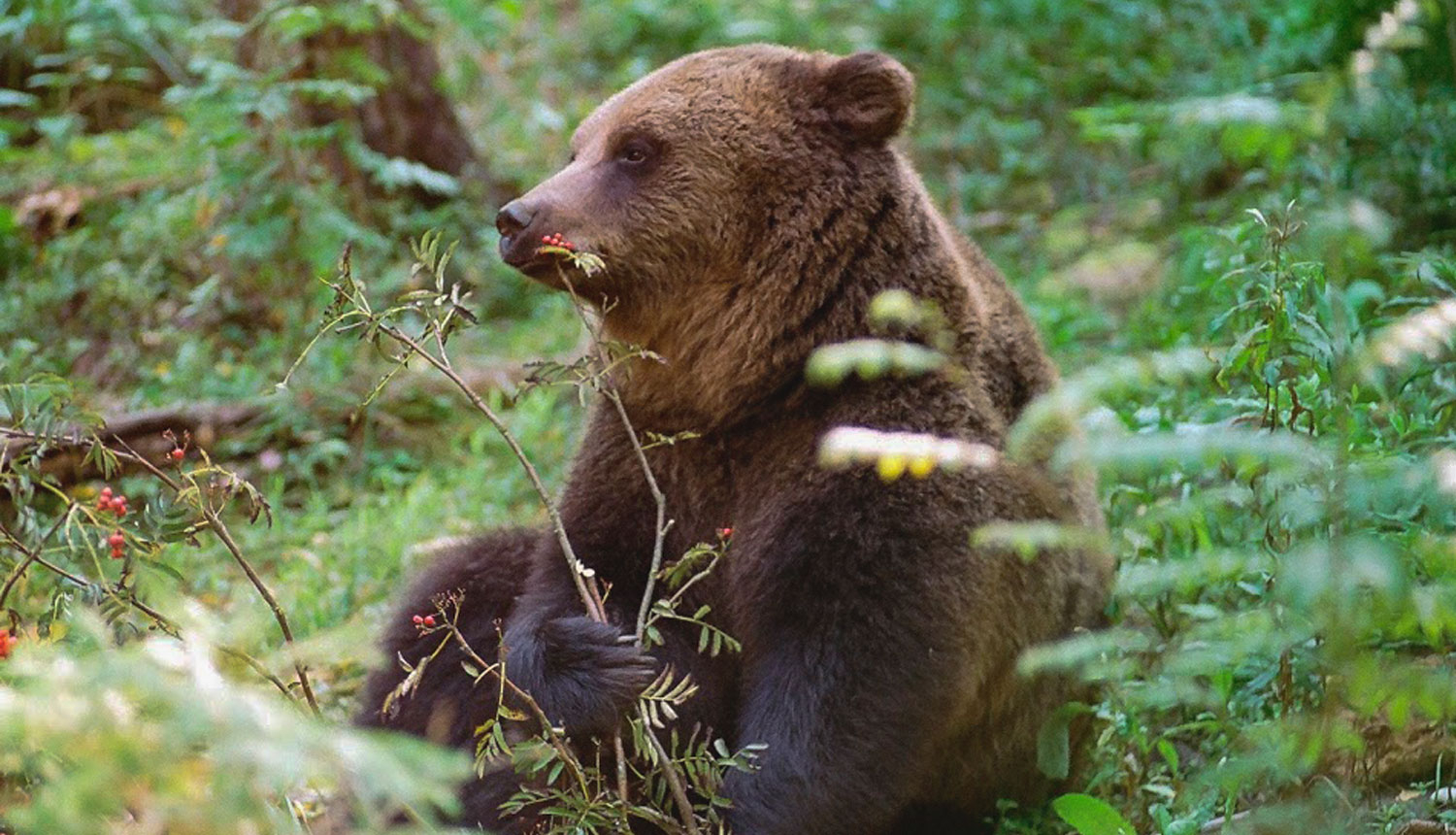Today, at a press conference on 1 October, the Nature Protection Board informed the issue of a permit for the scaring of bears with light and noise sealing munitions. . A permit has been issued to the municipality of Valka, which intends to entrust the coordination of this task to the Hunt Coordination Commission.
Vent Armands, Chairman of the municipality of Valka, informed the Raven that all holdings in which bear visits have been established have already been identified by the municipality, together with the Nature Conservation Board.
“The safety of the population is in the first place, so it must not be longer to wait and hope that the bears will stop going to one side for a comfortable feast,” explains V.A. Krauklis, adding that “the scare measures are planned to be implemented as soon as possible. . The local government has already identified its internal resources, as well as targeted the State Police to ensure a rapid response to calls for joint forces. "
According to the experience and recommendations of neighbouring countries, it is planned to carry out a deliberate disturbance of bears as a first option: if the animals come to their backyards, they will be intimidated by munitions of light and noise seals, which should cause sufficient discomfort and fright so that the bears will no longer approach them willingly. . Unlike noise and shelling, in this case, flares are allowed to be sent directly to bears in close proximity, without causing them discomfort, but without causing life-threatening injuries.
"The bears have apparently realized the possibility of being able to feed easily, so they have already been in a number of cities. . We have tried to frighten them away with noise, but after time the bears are returning again or going to another city, 'said the local resident of Valka county, Aivis Mountain, adding that “the most difficult thing in this situation is that bear behaviour is not predictable because it is absolutely not like a normal forest beast.”
According to surveys conducted by specialists in nature, there are now two separate groups of bears in the Valka municipality, two teenage bears in one group, the second most likely bear price with two bears. . Specialists allow each of these groups to react differently to the methods used.
The second option to prevent bear forays into single-mindedness is bear settlement. . In any group of bears, at least one of the bears would be wearied and moved far enough from the others, thereby undermining their courage to approach the man. m. Alone, each animal would be less daring to go in the courtyards.
"The use of this method for wild bears is rather dangerous and unpredictable, even in neighbouring countries has not yet been widely tested to be sure of its effectiveness. . It is therefore left as a backup option, but with very high risks, explains Gita Strode, director of the Department of Natural Conservation of the Authority.
Neither the Board nor the Riga National Zoo supports the capture and placement of bears in one of the animal shelters, such as the Ligatne nature trails or the Riga National Zoo.
'These sites consist of wild animals born in captivity and grew up and, without additional preparation of animals, must not be placed together with brothers of species caught in the wild. In order to ensure the preparation of animals, it is necessary to establish additional volleys. . The costs of building a new Volvo are to be measured in several tens of thousands and, including the design stage provided for by law, the construction of a holding may take a period of 3 months to a year m. Moreover, capturing and adapting wildlife in captivity is neither simple nor easy. . The wild-born animal may also be unaccustomed, which may result in serious changes in natural behaviour and significant psychological and physical health problems,” explains the Head of the Animal Collection of Riga National Zoo, Gunka Vetole.
“It should be understood that this is not typical bear behaviour and it should not be feared that in future all the bears present here will feed from human gardens and garbage urns”, explains Janis Ozolins, lead researcher of the Latvian State Forestry Science Institute, adding that “in normal circumstances the bear is predictable – it avoids contact with the man and knows how to get it. for ourselves, we can mostly see evidence of the presence of a bear, not the bear itself, in the woods."
Until now, there have been no cases of wild bears attacking people directly, but in recent years there have been more and more situations where wild bears are not afraid of people because of human behaviour. . Experts blame the person themselves in these situations s. The change in behaviour of wild animals may be affected by the launch of partially domesticated animals in the wild or by the regular deliberate or unintended feeding of animals, when food surpluses are left in the forest, or in farms near the forest, easily available fruit and vegetables are poured into piles.



